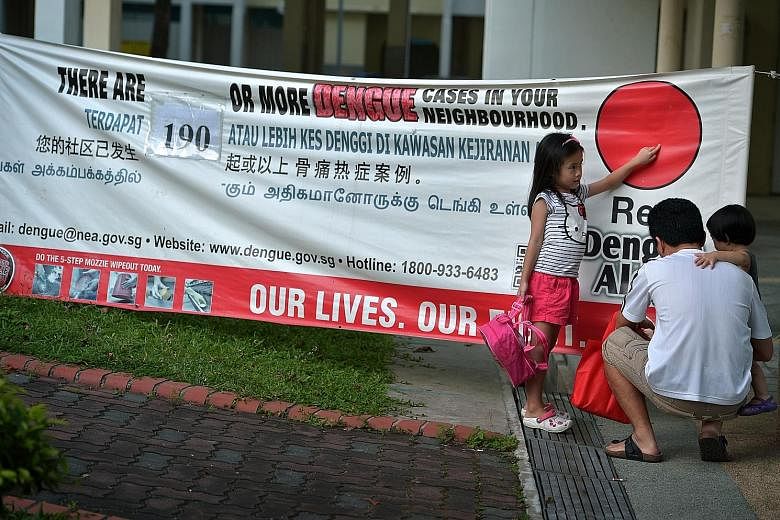Reader Stella Ng Sze Hwei wrote to askST: "What is the risk of dengue at parks and hiking places like MacRitchie Reservoir, compared to residential areas?"
Environment reporter Audrey Tan checked with the National Environment Agency.
There is a smaller risk of contracting dengue in the green spaces here, compared with urban spaces. But low risk does not mean no risk.
The National Environment Agency (NEA) says 140 species of mosquitoes have been found in Singapore. But only two of them - Aedes aegypti and Aedes albopictus - can transmit dengue here.
Of the two, Aedes albopictus is commonly found in forests, parks and areas with much greenery, but it is not as efficient at transmitting dengue as Aedes aegypti, which thrives in urban areas. Still, the NEA cautioned that Aedes albopictus has been responsible for outbreaks overseas when present in large numbers in densely populated areas.
"There is therefore some risk of acquiring dengue through this mosquito in our green spaces, particularly those with higher human traffic. However, the risk is comparatively lower than that in residential areas," said an NEA spokesman.
As for the Aedes aegypti, it has adapted to living in close proximity to humans and thrives in urban areas with a preference for biting humans. It usually breeds in artificial or natural water containers or bodies, including containers, flower pots or trays.
Said the NEA spokesman: "The risk of dengue is higher in areas with high human congregation such as urban residential areas, including parks and playgrounds... where there is higher likelihood of finding Aedes aegypti and infected humans, as compared to forested areas."
She noted that while it is common to detect dengue virus in mosquitoes from residential areas, no dengue virus has been detected in the tens of thousands of mosquitoes collected from forested areas.
Dengue cases are on the rise here. More cases were reported in the last week of April compared with the week before, according to figures from NEA's dengue website. A total of 244 cases were reported from April 24 to 30 - an increase of 15 cases from the previous week.
On the back of this increase, staying protected from mozzie bites should be a priority at home or when venturing outdoors.
The NEA spokesman advised members of the public to protect themselves from mosquito bites when visiting Singapore's nature areas by applying insect repellent and wearing long-sleeved, loose-fitting and light coloured clothing.
Products containing DEET (N,N-diethyl-m-toluamide) or picaridin as the active ingredient are generally most effective in repelling mosquitoes, she added.
These are usually more effective against biting insects compared to products using natural or plant-based insect repellent oil such as citronella, lemongrass or eucalyptus.

